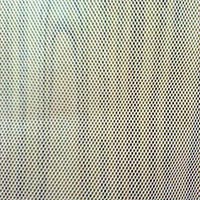HDPE monofilament, known for its strength, durability, and resistance to chemicals and UV rays, plays a critical role in various industries. From fishing nets and agricultural shading nets to packaging and industrial fabrics, HDPE (High-Density Polyethylene) monofilament mesh offers both performance and versatility. But how is this sturdy, lightweight thread made? Let’s explore the step-by-step process that transforms raw polymer into a fine monofilament mesh.
-
Understanding the Base Material: HDPE Polymer
The journey begins with the raw material—HDPE polymer. High-Density Polyethylene is a thermoplastic polymer made from petroleum. It is known for its high strength-to-density ratio, which makes it suitable for manufacturing tough, long-lasting products. HDPE granules or pellets are typically delivered in bulk and stored under controlled conditions to ensure quality.
Before processing, the polymer may be mixed with various additives such as UV stabilizers, colorants, or antioxidants. These additives enhance the filament’s performance in specific environmental conditions, like intense sunlight or industrial exposure.
-
Extrusion: Melting and Shaping
Once the HDPE pellets are ready, the next step is extrusion—a thermal and mechanical process used to shape the polymer into monofilament form.
- Feeding and Melting: The HDPE granules are fed into an extruder, a machine that uses heat and pressure to melt the plastic. As the granules travel through the heated barrel, they gradually melt into a uniform molten state.
- Extrusion Through Spinneret: The molten polymer is then forced through a die or spinneret—a metal plate with very fine holes. This action shapes the molten HDPE into long, continuous strands of monofilament.
-
Cooling and Solidification
As the hot filaments exit the spinneret, they need to be cooled quickly to solidify and maintain their shape. The monofilaments pass through a quenching bath—a tank filled with cold water. This step is critical, as it stabilizes the diameter and surface texture of the monofilament.
The temperature and duration of the quenching process are precisely controlled to ensure the monofilament retains the desired strength and flexibility.
-
Stretching: Enhancing Strength
After cooling, the monofilament undergoes a stretching or orientation process. This involves pulling the strands to several times their original length. Stretching aligns the polymer molecules in a uniform direction, greatly increasing the tensile strength, durability, and elasticity of the monofilament.
This step is particularly important in applications where the mesh needs to withstand high tension, such as fishing nets or shading nets.
- Winding and Conditioning
Once stretched, the monofilament is wound onto bobbins or spools. These spools are then left to condition—a step that allows the material to relax and stabilize. Proper conditioning improves the consistency and uniformity of the filament in its final application.
Some manufacturers may also treat the monofilament with anti-static or anti-dust coatings depending on the intended use.
- Weaving or Knitting Into Mesh
The final step is transforming the monofilament into a usable mesh form. This is done by weaving or knitting the monofilament threads using specialized machines. The mesh pattern, density, and thickness depend on the specific application:
- Agricultural nets are often made with wider spacing to allow light and air penetration.
- Filtration fabrics require tighter weaves for fine particle capture.
- Packaging mesh needs moderate density to ensure strength and flexibility.
Each application may require different weaving techniques and equipment settings to achieve the right mesh characteristics.
Final Thoughts
From polymer to mesh, the production of HDPE monofilament is a sophisticated process involving precision engineering and quality control at every stage. The resulting mesh is lightweight, strong, weather-resistant, and suitable for a wide range of commercial and industrial applications.
Understanding this journey not only highlights the ingenuity behind HDPE monofilament production but also sheds light on the science and skill involved in creating materials that support agriculture, aquaculture, construction, and more.



